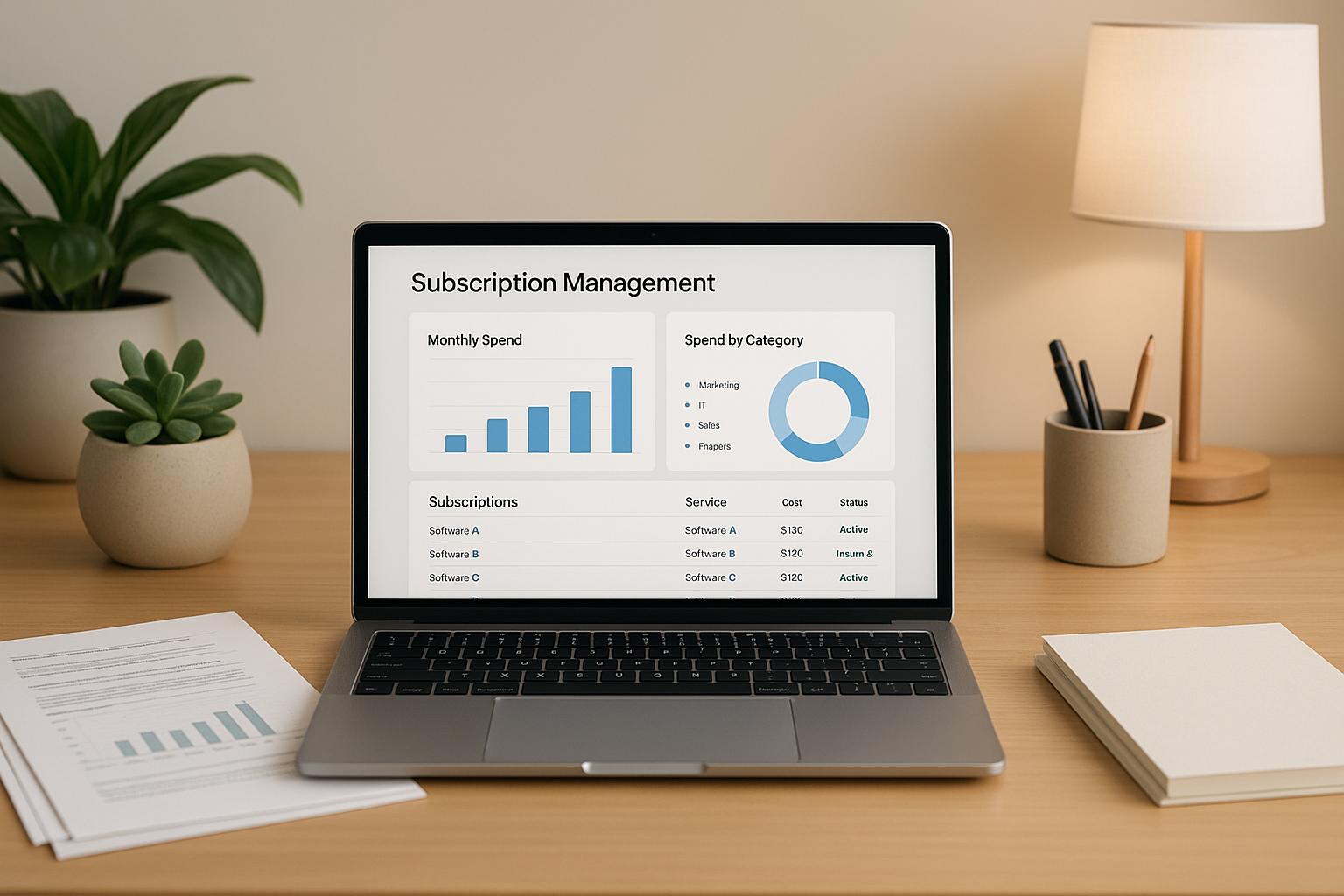How Early Payment Discounts Impact Working Capital

Early payment discounts can save businesses money while strengthening supplier relationships. These discounts, like "2/10 net 30", offer a percentage reduction (e.g., 2%) if invoices are paid early (e.g., within 10 days). This practice not only reduces costs but also improves financial metrics like cash flow and supplier terms. For example, paying a $100,000 invoice early at a 2% discount saves $2,000, which translates to an annualized return of over 36%.
However, businesses must balance these savings with liquidity needs. Tools like automated payment systems and dynamic discounting programs make it easier to manage timing and capture savings effectively. Key benefits include improved cash conversion cycles, stronger supplier relationships, and reduced administrative errors. By integrating technology and clear policies, companies can optimize these discounts to boost financial health and operational efficiency.
How Early Payment Discounts Affect Working Capital
Early payment discounts can influence a company's cash flow, liquidity, and even relationships with suppliers. By strategically timing payments, businesses can unlock savings, improve operational efficiency, and enhance financial metrics. Here's how these discounts shape working capital dynamics.
Cash Flow Effects of Early Payment Discounts
Taking advantage of early payment discounts means businesses pay invoices sooner, leading to immediate cash outflows. However, this also results in reduced accounts payable and cost savings that can outweigh the initial cash reduction. For example, consistently paying early can strengthen supplier relationships, which becomes critical during supply chain disruptions or periods of high demand.
In fact, 85% of suppliers report improved cash flow due to early payments, and this can lead to a 35% increase in supplier prioritization when resources are scarce. Companies utilizing dynamic discounting - flexible programs tied to payment timing - often see even greater benefits, including stronger supplier relationships, priority service, and fewer disputes. Research shows this approach can reduce supplier disputes and delays by 30%, streamlining operations and cutting down on administrative burdens.
Suppliers also benefit significantly. Those offering discounts for payments within 10 days reported a 40% drop in days sales outstanding (DSO) and a 30% decline in default rates, giving them the liquidity they need to offer better terms and maintain business stability.
Balancing Liquidity and Cost Savings
While early payment discounts offer clear savings, companies must balance these savings with their liquidity needs. For businesses experiencing growth or tight cash flow, this decision becomes even more critical. The question boils down to whether the savings from discounts outweigh the opportunity cost of using cash elsewhere.
"The difference between when you collect and when you pay is measured in days, but its impact is felt in dollars - and it needs to be funded."
Take the example of 2/10 net 30 terms: paying within 10 days provides a 2% discount, which annualizes to a 37% return. This return often exceeds the cost of alternative financing, making it an attractive option for many businesses.
Chick-fil-A offers a practical example of this balance. Steven Peterson, Executive Director of Treasury, explains their "Goldilocks" philosophy:
"We wanted kind of a Goldilocks payment philosophy where we don't pay too early, but we don't pay too late - we just pay on time."
This strategy avoids straining cash reserves while still capturing savings and maintaining strong supplier relationships. For smaller businesses, early payment discounts can even serve as an alternative to traditional financing, offering a cost-effective way to manage expenses.
However, there are challenges. Administering early payment discounts can account for up to 12% of accounts receivable management costs, and around 15% of companies face disputes over discount misuse annually. Clearly defined policies and efficient processes are essential to minimize these risks.
Impact on Key Financial Metrics
Early payment discounts also leave a mark on financial metrics, which are closely monitored by investors and management teams. While some metrics may show short-term changes, the long-term benefits often outweigh the drawbacks.
- Days Payable Outstanding (DPO): DPO typically decreases when early payment discounts are utilized. While this might seem like a negative, the associated cost savings and improved supplier terms usually enhance overall performance.
- Liquidity Ratios: Current ratios may temporarily dip due to reduced cash balances, but the long-term financial position often improves thanks to stronger supplier relationships and operational efficiencies.
- Cash Conversion Cycle: Paying suppliers faster increases outflows, but better supplier terms and improved inventory management can offset this.
The return on investment (ROI) for early payment discount programs often ranges between 10-20%, factoring in both direct savings and indirect benefits like reduced operational risks and better supplier loyalty.
| Metric | Description | Typical Impact |
|---|---|---|
| Supplier Retention Rate | Percentage of suppliers retained year-over-year | 15%+ increase |
| Order Fulfillment Rate | Percentage of orders delivered complete and on-time | 8-12% improvement |
| Price Stability | Consistency of pricing over time | Reduced volatility |
| Response Time | Speed of supplier response to inquiries/issues | 30%+ faster |
Tiered discount programs, where percentages vary based on payment timing, further enhance supplier engagement, boosting it by 25%. These programs demonstrate how strategic payment practices can strengthen working capital management while delivering measurable improvements across multiple performance areas.
Industry Case Studies
Examples from various industries show how early payment discount strategies can effectively improve working capital management. While the challenges differ across sectors like manufacturing, retail, and services, the core advantages - better cash flow, stronger supplier relationships, and cost savings - remain consistent.
Manufacturing: Boosting Supply Chain Stability
In manufacturing, early payment discounts are often tied to maintaining a stable supply chain and optimizing working capital. Manufacturers depend on steady material supplies, and payment timing can significantly influence supplier priorities, especially during shortages.
Take the case of Zenith Group Advisors and their work with a cookie manufacturer earning $250 million annually. This company, which supplies major retailers, introduced a supply chain finance strategy that extended payment terms from 39 to 120 days while offering early payment options. The result? A 50% increase in supplier discounts and a 10% reduction in the cost of goods sold. This approach allowed them to balance cash flow flexibility with the ability to seize discount opportunities when funds were available.
Manufacturers that adopt such strategies often see tangible benefits. For instance, suppliers tend to prioritize them more during shortages - up to a 35% increase in priority. Additionally, nearly half of suppliers (48%) report faster innovation when payments are accelerated. These programs also lead to clearer payment structures, reducing supplier disputes and delays by 30%, and cutting supplier turnover incidents by half.
"Offering early-pay discounts creates a win-win situation where suppliers receive faster access to capital while buyers can strengthen their supply chain and often save money." - Resolve Team
Dynamic discounting programs, which adjust discount rates based on payment timing, have proven especially effective in this sector. Companies using these methods report 40% stronger long-term relationships with suppliers, reduced operational risks, and more consistent production schedules.
Retail: Tackling Seasonal Cash Flow Challenges
Retailers face unique cash flow hurdles due to seasonal demand shifts, inventory cycles, and the need to maintain liquidity during peak periods. Early payment discounts provide a way to manage these fluctuations while preserving supplier relationships.
During high-demand seasons, such as the holidays, retailers often offer higher discount percentages to encourage early payments. This helps build cash reserves ahead of critical sales periods when inventory investments are at their peak. Conversely, during slower months, retailers may adjust their strategies to preserve cash while still leveraging supplier discounts for future inventory needs.
These programs bring multiple benefits to retail businesses. By improving cash flow and creating predictable working capital cycles, retailers can better align payments with their seasonal inventory demands. For example, offering aggressive early payment terms during off-peak months can help maintain liquidity, while taking advantage of discounts during peak inventory building ensures cost savings.
Technology plays a crucial role here, with invoicing and payment software automating discount applications. This reduces administrative errors and ensures consistent execution, particularly during busy periods when manual processes might fail. Such tools streamline operations and enhance working capital management by syncing cash flow with operational needs.
Services: Managing Costs and Cash Flow
Service businesses, which typically have lower inventory but higher labor costs, approach early payment discounts differently. For these companies, the challenge lies in balancing the cost of discounts against their cash flow needs.
Dynamic discounting is especially useful in this sector. It allows businesses to adjust discount rates based on current cash flow conditions, making it ideal for service companies with project-based revenue or seasonal demand variations. These programs often prove more cost-effective than traditional financing options like bank loans or factoring.
Administrative oversight is key to running early payment discount programs efficiently. Yet, when managed well, these programs not only strengthen supplier relationships but also reduce financing costs and enhance cash flow management. Service companies that regularly evaluate their cash flow and adjust their strategies can maximize the benefits of these programs, aligning payments with operational demands while saving on costs.
Strategies for Maximizing Early Payment Discounts
For growing companies, efficiently capturing early payment discounts is a smart way to boost cash flow while strengthening ties with suppliers. Success in this area depends on careful evaluation, strategic planning, and consistent monitoring.
Evaluating Discount Opportunities
To make the most of early payment discounts, start by converting discount offers into their annual percentage rate (APR). This allows you to compare these discounts directly with borrowing costs. Use the formula: APR = (discount rate / days paid early) × 360. It’s a simple way to see the true value of paying invoices early.
Let’s break it down with an example: A common 2% discount for paying within 10 days instead of 30 (2/10 net 30) translates to a 37% annual return. Even smaller discounts can be worthwhile - a 1%/10 net 30 deal equals an 18% annualized return. These returns often outshine borrowing costs, making early payment discounts a cost-effective financing option.
"These discounts improve cash flow because as payments come in quicker, it possibly can reduce the cost of borrowing", says Janine Sabo, CCE, Corporate Credit Manager at Branscome Operating LLC.
Scenario modeling can also help. By analyzing liquidity and its effect on metrics like Days Sales Outstanding (DSO) and cash flow, you can determine how early payments fit into your financial strategy. Additionally, prioritize suppliers whose payment terms directly affect production or service delivery. While standard discount rates range from 1% to 3%, the long-term value of strong supplier relationships often outweighs the immediate savings.
Once you’ve identified opportunities, set up consistent processes to capture these discounts.
Best Practices for Implementation
Getting the timing right is critical. By prescheduling payments as soon as invoices are approved, you can consistently take advantage of early payment discounts. Automating payment scheduling can make this process seamless.
Dynamic discounting programs are another great option. These programs allow businesses to negotiate discount rates in real-time, based on current cash flow and supplier needs. This flexibility is especially helpful for businesses with fluctuating cash flow, such as those with seasonal revenue cycles.
Switching to paperless accounts payable (AP) workflows can also make a big difference. Real-time access to invoice statuses helps finance teams prioritize payments based on available cash and the value of discounts. This transparency ensures that no opportunity slips through the cracks.
Strong communication with vendors is another cornerstone of success. Discussing payment terms and cash flow needs can lead to better arrangements. Clear policies that prioritize invoices based on factors like discount thresholds, cash flow, and supplier importance will help maintain consistency while protecting liquidity.
Tracking and Measuring Impact
After implementing these strategies, tracking their performance is essential. Using real-time financial data, businesses can monitor the results of their early payment discount efforts. Automation tools that integrate invoice capture, approval workflows, and spend visibility with accounting systems are especially useful here.
The accounts payable automation market is booming, with projections showing growth from $4.48 billion in 2024 to $5.44 billion in 2025 - a 21.4% annual growth rate. These tools can cut AP task time by up to 80%, freeing up teams to focus on strategic priorities like vendor relationships and cash flow management.
Key performance indicators (KPIs) to track include:
- Discount dollars captured
- Capture rate
- Cash conversion cycle
- Supplier relationship strength
AI-powered analytics can take things a step further by offering insights into cash flow patterns and spending habits. These tools can forecast the best payment timing, identify seasonal trends in discounts, and assess the impact of various payment strategies on working capital. Integrating these insights into your financial systems ensures smooth reporting and analysis.
Regular reviews of your strategy will help fine-tune your approach. By continuously evaluating discount capture rates, cash flow impacts, and supplier relationships, businesses can maximize the benefits of early payment discount strategies over time.
sbb-itb-e766981
Working with Advisory and Technology Partners
Implementing early payment discount strategies effectively requires a mix of expert advice and cutting-edge technology. For many growing businesses, teaming up with financial advisors and utilizing advanced tech solutions can make a significant impact on working capital management. Let’s dive into how advisory expertise and technology solutions work together to refine early payment discount strategies.
Advisory Support for Scaling Businesses
While early payment discounts can boost cash flow, advisory partners can take these strategies to the next level. These experts simplify the complexities of managing working capital and help businesses uncover inefficiencies. They also use analytics to provide deeper insights into cash flow trends.
McKinsey estimates businesses can reduce the balance tied up in payables and receivables by 30% or more with a targeted working capital program.
Achieving such results typically requires expert input to design analytical approaches that address critical working capital challenges.
Advisory partners are skilled at evaluating vendor agreements to discover hidden discount opportunities. They assist in creating clear policies to prioritize invoices based on factors like discount value, cash flow impact, and supplier relationships.
Take Phoenix Strategy Group as an example. They specialize in providing strategic financial advisory services to growth-stage companies. Their fractional CFO services and FP&A expertise help businesses craft early payment discount strategies that align with broader financial goals. By combining financial know-how with proprietary data analysis, they help businesses assess discount opportunities in the context of their unique cash flow needs.
When choosing an advisory partner, focus on finding professionals who understand your business inside and out. Look for advisors with broad experience, a strong grasp of technology infrastructure, and the ability to align with your company’s values and goals.
Using Data and Technology
In addition to expert advice, advanced technology plays a crucial role in maximizing early payment discount opportunities. Modern tools take cash flow tracking to the next level, offering real-time insights and streamlining the entire process. Machine learning and AI, for example, provide real-time cash flow forecasts and flag potential issues before they arise.
Financial analytics platforms give businesses a complete view of their working capital. By consolidating data from multiple sources, these tools make it easier to determine the best timing for payments. They also analyze metrics like days sales outstanding (DSO), days payable outstanding (DPO), and the cash conversion cycle (CCC) to identify areas for improvement.
For instance, Simple Mills, a snack food company, used MineralTree’s AP automation solution to transform its accounts payable process. By automating workflows, the company ensured invoices were processed on time, consistently capturing early payment discounts. This not only strengthened vendor relationships but also saved the company significant costs over time.
AI-driven tools add even more flexibility by enabling dynamic discounting. These systems adjust discount amounts based on when payments are made and the company’s current cash flow. This approach is particularly beneficial for businesses with seasonal revenue patterns or fluctuating cash reserves.
Technology creates an interconnected system for managing working capital. For example, an advanced-electronics company revamped its invoicing process and set up an accounts receivable task force. The result? A 20% improvement in accounts receivable performance compared to their previous baseline.
Modern AP automation platforms also empower suppliers by giving them better control over their cash flow. At the same time, they help businesses forecast payment timings, identify seasonal discount trends, and evaluate how different payment strategies impact financial performance.
To get the most out of these tools, it’s essential to choose technology partners that integrate smoothly with your existing systems and offer the analytical capabilities needed to make informed decisions about early payment discounts.
Key Takeaways
Early payment discounts are a smart way to improve working capital, offering advantages that extend well beyond simple cost savings. This approach aligns naturally with broader working capital strategies already discussed.
Benefits at a Glance
Taking advantage of early payment discounts has a clear financial upside. For example, a 2% discount under "2/10, net 30" terms translates to an impressive 37% annual return. Even a 1% discount delivers an 18% annualized return. These aren’t just numbers - they represent real opportunities to boost efficiency.
Supplier relationships also see a noticeable boost. Research highlights that 76% of suppliers offer better terms or prioritize service for customers who pay early. Additionally, 70% of suppliers report greater loyalty when early payment discounts are offered. In times of supply chain disruptions, buyers who leverage early payment discounts are 35% more likely to receive prioritized service.
Operational improvements are another key benefit. For instance, a mid-sized manufacturing company saw on-time payments rise by 15% within just three months of implementing an early payment discount program. Similarly, a retail chain reduced its accounts payable processing time by 30% and cut payment errors by 25% within six months of adopting automated early payment systems.
The return on investment for these programs typically falls between 10% and 20%, thanks to the combined savings and strengthened supplier ties. Companies that implement dynamic discounting often report 40% stronger supplier relationships, creating long-term competitive advantages that grow over time. These outcomes serve as a strong foundation for refining your discount strategy.
Steps to Get Started
To make the most of early payment discounts, follow these actionable steps:
- Assess Cash Flow and Vendors: Start by evaluating your cash flow and identifying vendors that offer early payment terms. Use accounts payable aging reports to spot potential discount opportunities.
- Standardize and Prioritize: Adopt consistent discount terms like "2/10, net 30" across your organization. Set clear policies to prioritize payments based on factors like discount value, cash flow impact, and supplier importance.
- Leverage Technology: Invest in accounts payable systems that automate discount calculations and payment timing. These tools can flag opportunities, calculate returns, and ensure timely payments - helping you avoid human errors and capture more savings.
- Monitor Key Metrics: Regularly track metrics like days payable outstanding (DPO) and cash conversion cycle. Monthly reviews can help you fine-tune your discount strategy.
- Educate and Communicate: Share the benefits of early payment discounts with your internal teams and suppliers. Train accounts payable staff on how these programs improve financial outcomes, and reinforce your commitment to timely payments with your suppliers.
- Seek Expert Guidance: Consider working with financial advisors who specialize in optimizing working capital. For example, Phoenix Strategy Group offers fractional CFO services and FP&A expertise to help growth-stage companies align early payment discount strategies with larger financial goals.
The real value comes from treating early payment discounts as a strategic initiative, not just a cost-saving tactic. With the right mix of technology and expert advice, these programs can drive meaningful improvements in cash flow, supplier relationships, and overall financial health.
FAQs
What’s the best way for businesses to balance early payment discounts with cash flow needs?
To strike the right balance between taking early payment discounts and maintaining healthy cash flow, businesses need to assess their financial position carefully and keep flexibility in mind. Begin by pinpointing which discounts offer the greatest value and align with your financial objectives. At the same time, explore the possibility of negotiating extended payment terms with your suppliers to ensure cash flow remains steady while still reaping the benefits of early payment incentives.
Timing your payments strategically can also make a big difference in managing working capital. For instance, if taking advantage of a discount would leave your cash reserves too low, it might be wiser to hold off on payment to preserve funds for other essential operations. A well-thought-out strategy allows your business to save money while maintaining financial stability.
How do early payment discounts affect key financial metrics, and what should companies track to manage these impacts?
Early payment discounts can play a notable role in shaping financial metrics like the cost of goods sold (COGS), Days Payable Outstanding (DPO), cash flow, accounts payable, and days sales outstanding (DSO). When companies either offer or take advantage of these discounts, they can lower expenses. However, this often involves adjusting payment schedules, which can affect liquidity and working capital.
To stay on top of these shifts, businesses need to keep a close eye on their financial health. Regularly reviewing financial statements, analyzing cash flow patterns, and monitoring accounts payable aging reports are essential practices. These efforts help ensure that taking early payment discounts delivers a net financial gain without causing cash flow issues or disrupting operations.
What are dynamic discounting programs, and how do they compare to traditional early payment discounts?
Dynamic discounting programs offer buyers the chance to secure bigger discounts by paying invoices earlier, using a flexible, sliding scale. The earlier the payment, the larger the discount - unlike traditional early payment discounts, which stick to a fixed rate no matter when payment is made within the agreed period.
These programs create a win-win scenario for both buyers and suppliers. Buyers can manage their cash flow more effectively, aligning payment timing with their financial goals. On the other hand, suppliers benefit from quicker payments, which helps improve their liquidity. This adaptability makes dynamic discounting an attractive option for businesses aiming to better manage their working capital.




